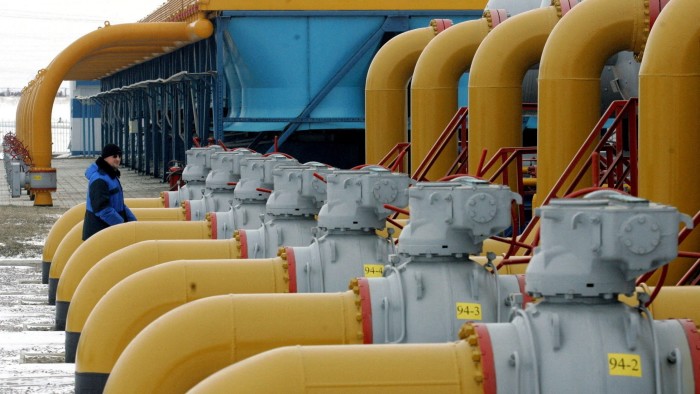Unlock the Editor’s Digest for free
Roula Khalaf, Editor of the FT, selects her favourite stories in this weekly newsletter.
Europe’s natural gas sector is going back to the future. The continent has come a long way since Russia’s full-scale invasion of Ukraine in 2022 upended decades of energy policy. It has managed to compensate much-reduced Russian imports by attracting more liquefied natural gas — particularly from the US — and using a lot less of the fuel overall.
But over the past few weeks, choppiness has returned. There is less gas in storage than customary at this time of year. Prices jumped to a two-year high on February 10. They have since fallen by almost a fifth as European countries consider relaxing requirements to refill storage in the summer. With the start of negotiations to end the war in Ukraine, there has even been talk of shut-in Russian imports creeping back into the mix.
This sepia-coloured snapshot reflects the fact some of the demand for gas that disappeared in Europe, helping the bloc balance its books, may be coming back.
For an idea of the numbers involved, just think that European demand is about 100bn cubic metres lower than it was in 2021. That’s about 18 per cent of pre-crisis consumption in OECD Europe. A chunk — lost to new renewables — is gone for good. A fifth or so comes from lower industrial gas consumption, as European companies lost market share. Much of that is likely permanent, too, though not particularly desirable. The rest was largely luck, in the form of two mild winters in a row.
Indeed, Europe’s demand in the fourth quarter — which the International Energy Agency reckons rose by 9 per cent on a cold, windless snap and a smattering of growth — shows on what shaky bases the continent’s gas equilibrium now rests. That, coupled with a tight global LNG supply, led to the recent price increases.
Occasional price surges notwithstanding, European leaders should be wary of resuming their ill-fated dependence on Russia. Delayed LNG projects will at some point hit the market, loosening supply constraints. The US, which wants Europe to buy its own liquefied shipments, may also be reluctant to let a competitor flood the market. All that augurs well for Europe to continue on its current path.
Yet Russian gas potential is huge. Even without factoring a return of shut-in pipeline gas, the Arctic LNG 2 project could, by itself, provide 27 bcm of additional supply when fully developed. Until Europe fixes its underlying energy mix — in a way that doesn’t periodically shutter its industry — it will find it hard to fully quash the siren song of Russian gas.
camilla.palladino@ft.com

